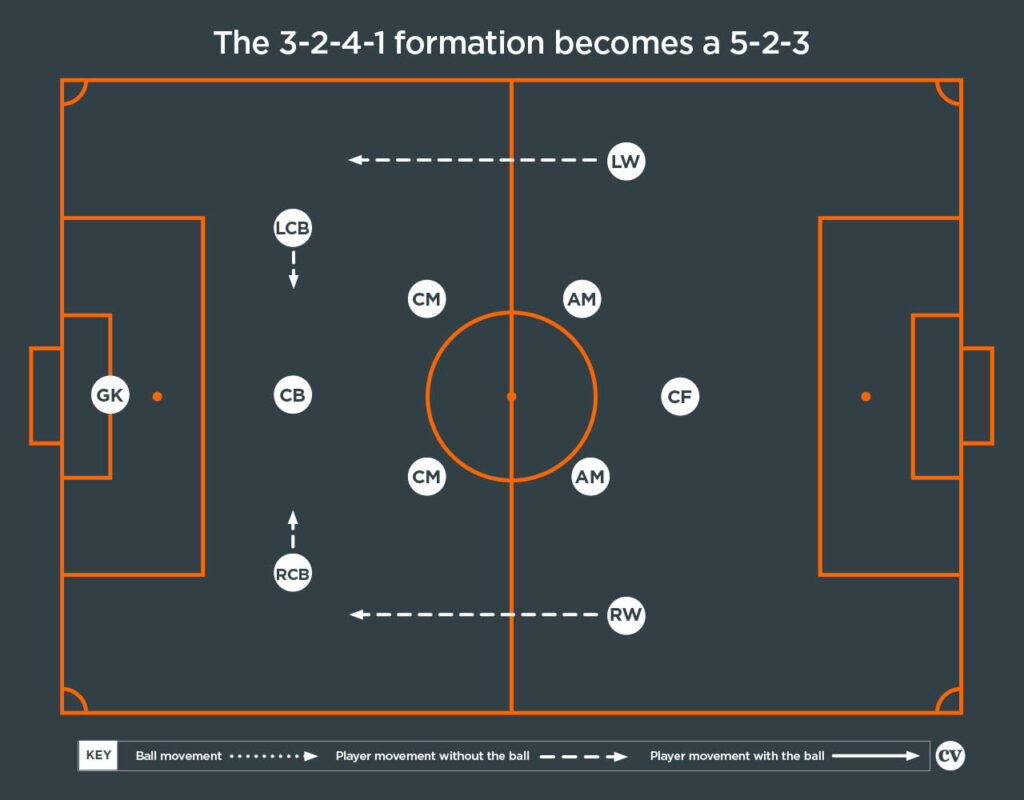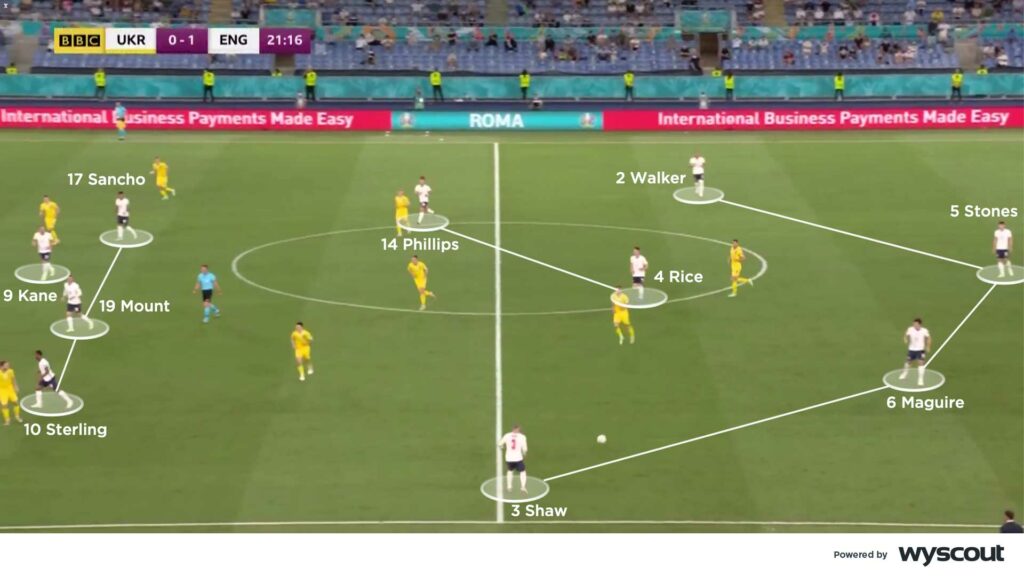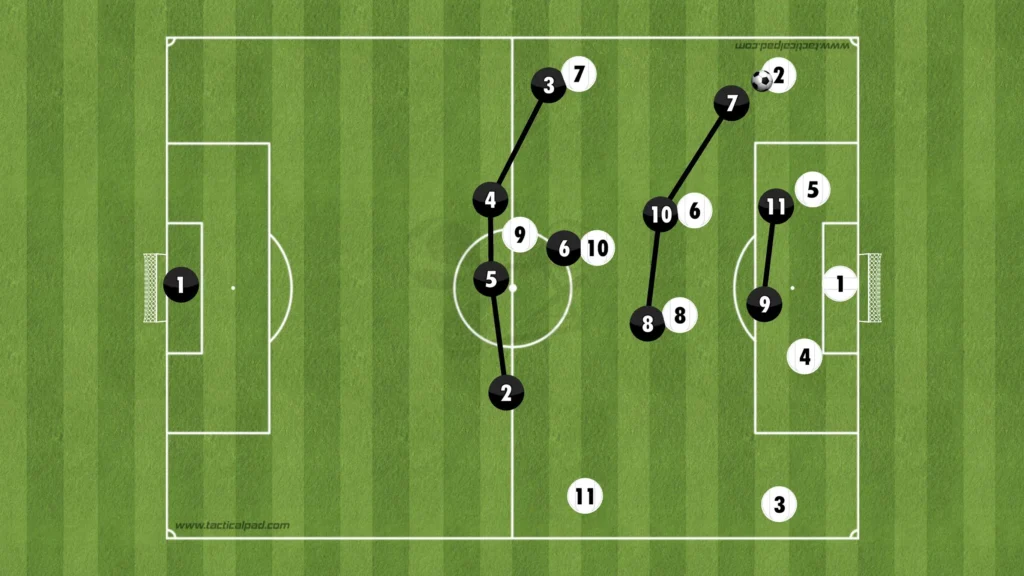Man, I was just fed up. Completely sick of seeing the standard 4-4-2 or that boring 4-3-3 everyone trots out on Sunday. It’s effective, sure, but where’s the spice? I was watching some old tape, seeing these super old, aggressive setups, and I locked onto this crazy 2-3-4-1 idea. Two defenders. Only two! Everyone told me I was nuts. They said we’d get absolutely murdered on the break.

But I thought, if you commit the numbers forward, you need to solve the defensive catastrophe before it happens. I decided I was going to test it, log everything, and prove them wrong, even if it meant a few painful losses.
Setting Up the Disaster
I gathered the usual suspects for our mid-week session. I drew it out on the whiteboard. The lads just stared. Two guys at the back, basically sweeping, and then seven guys jammed forward with one lone striker. I had to really sell the vision. The central idea I drilled into them was: we are not defending with two, we are defending with five, but only after we lose the ball.
- First, I pulled our two most reliable, fast center-backs, Liam and Mike. Their instruction was simple: stay central, communicate constantly, and never, ever commit to the tackle unless you are 100% sure you’ll win it. They were the last line.
- Then came the real tricky part: the midfield ‘3’. These weren’t regular central midfielders. I labeled them the ‘Security Blanket.’ They were supposed to act like aggressive pivots, always looking for the pass, but the second possession was lost, they had to drop fast, turning that 2 into a temporary 5-man line.
We started the scrimmage. It was instant chaos. Within ten minutes, we conceded three goals. Three absolutely horrific goals. Why? Because the ‘3’ was mentally slow. They were still thinking like box-to-box midfielders, trying to run past people instead of immediately tracking back.
Drilling the Deep Midfield Block
I stopped the game immediately. I screamed at the ‘3’ to get their butts back. I grabbed cones and physically moved them right on top of the back two the moment the attacking ‘4’ passed the halfway line and lost possession. I made them practice the transition for a solid hour—loss of possession, immediate 10-yard sprint backward, cover the channels Liam and Mike were leaving.
This is where the Deep Midfield Block concept finally started clicking. The ‘3’ wasn’t just jogging back; they were aggressively filling the wide spaces left by the exposed ‘2’. When the opponent counter-attacked, they didn’t face two isolated defenders; they suddenly faced five guys packed tightly across the penalty box edge. It looked less like 2-3-4-1 on defense and more like a tight, ugly 5-2-3 structure for about three crucial seconds.

We started another scrimmage, this time against a faster opposition team we borrowed for the practice. The improvement was noticeable.
The Process Logged:
The key was making the transition seamless and punishing slow reaction times.
- The forward ‘4’ (two wingers and two attacking mids) had an ironclad rule: high press the opposing backline constantly. Their job wasn’t scoring; it was forcing a fast, messy turnover high up the pitch.
- If the high press failed, the ball dropped to the ‘3’. If the ‘3’ lost it, they had zero hesitation. They had to slam the brakes and reverse.
- We started using specific triggers. If the opponent’s deepest midfielder touched the ball, that was the trigger for the ‘3’ to drop. It bypassed the need for high-level tactical intelligence; it was a simple, mechanical response.
We actually managed to hold a clean sheet for the rest of that session! The opponents were frustrated because they kept seeing open space, initiating a fast break, and then slamming straight into a wall of five guys who just appeared out of nowhere. The two center-backs rarely had to step out and challenge; they were just there to sweep up anything that got past the block.
The Trade-Offs I Observed
It’s not perfect, don’t get me wrong. While the deep block saved the backline, it completely killed our central possession when we tried to transition back to attack. The ‘3’ was so drilled to drop that they were slow to push forward again.

But the sheer aggression of the ‘4’ meant we constantly won the ball high up. When we did score, it wasn’t beautiful passing football; it was high-energy smash-and-grab stuff. We were leveraging the block not just for defense, but as a mechanism to reset the high press almost instantly.
My final conclusion after running this formation for a few weeks in local leagues? It destroyed teams that relied on slow, structured build-up. They couldn’t handle the sudden pressure from the ‘4’ and then the quick transition to the packed defense of the ‘3’ and ‘2’.
We did get badly exposed by one specific type of team, though: the ones that just bypass the midfield entirely with fast, long diagonal balls to pacey wingers. If that ball beat the high press and landed behind the ‘3’, Liam and Mike were left hanging out to dry. We learned we had to rely on fouling or extremely disciplined positioning in those scenarios. But overall, that deep midfield block—that defensive ‘3’ becoming a lifeline—it worked. It made the crazy 2-3-4-1 actually playable. It turned a tactical joke into a serious headache for the opposition. Now I’m thinking about how to tweak the single striker role…
